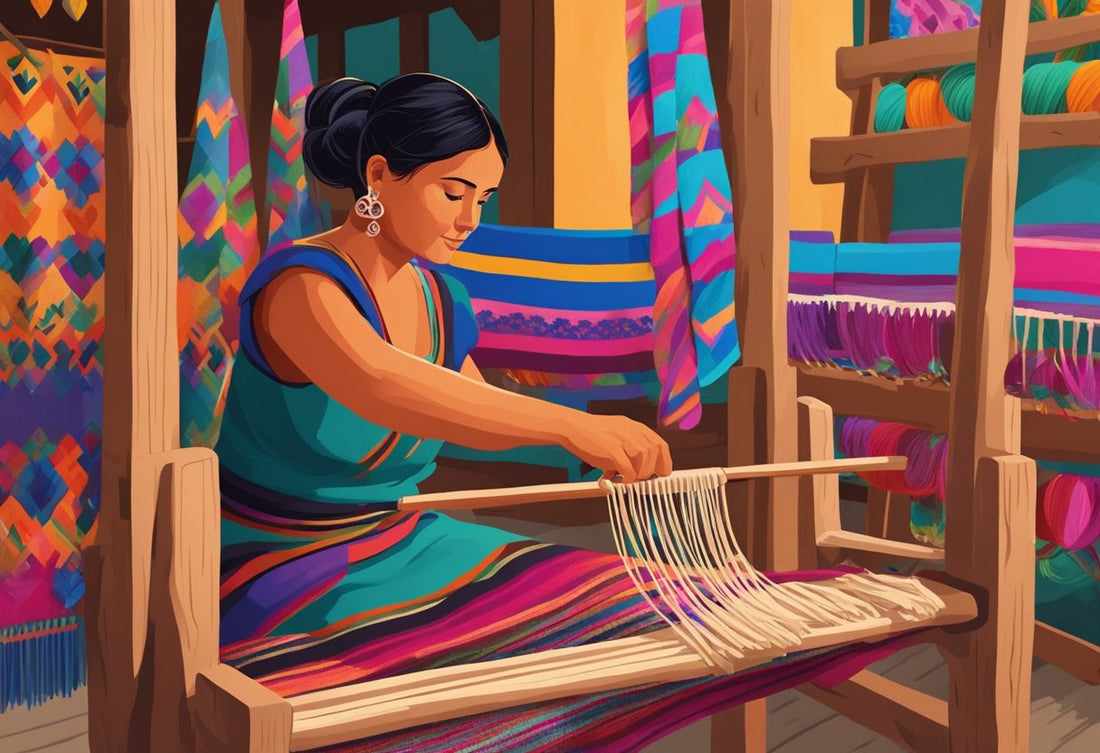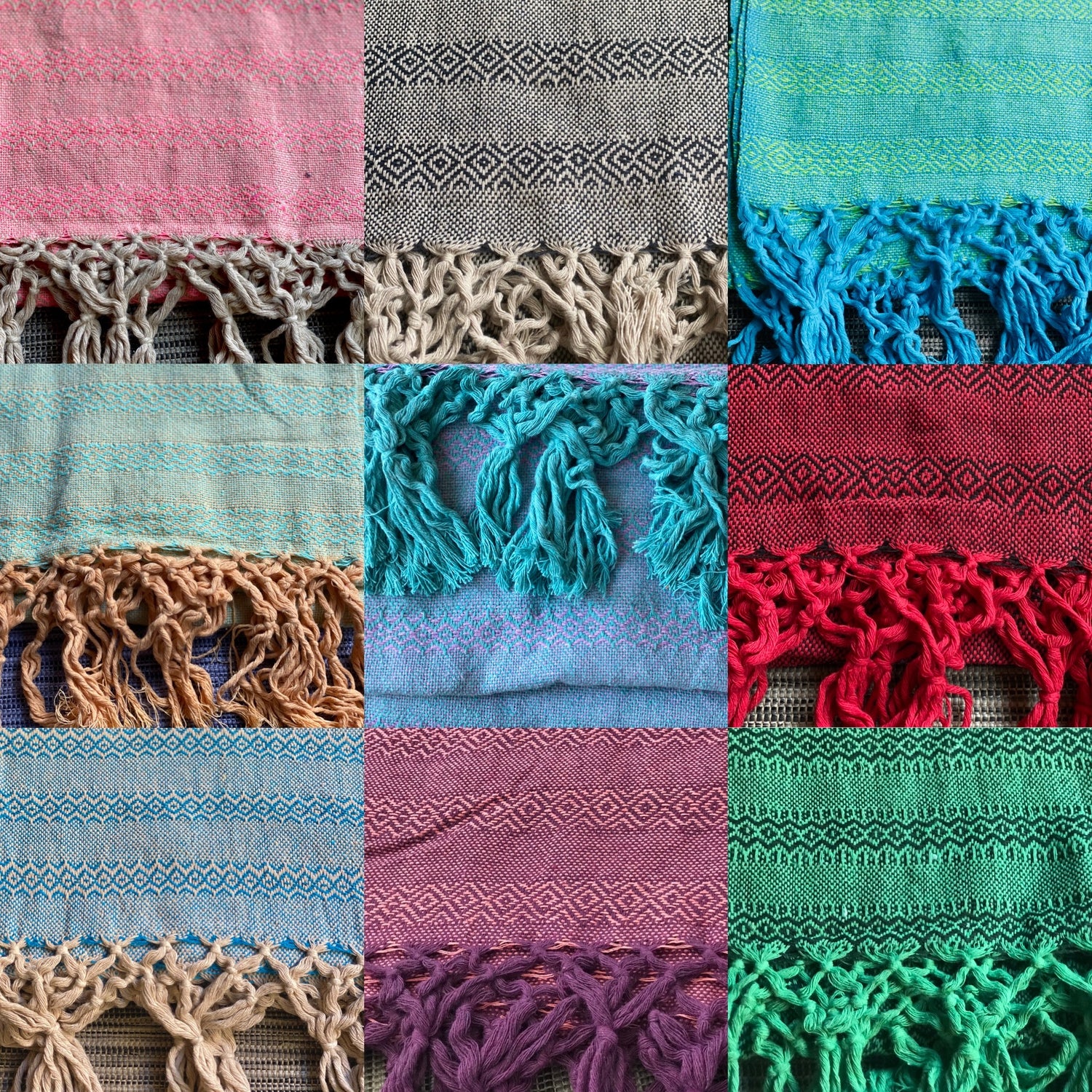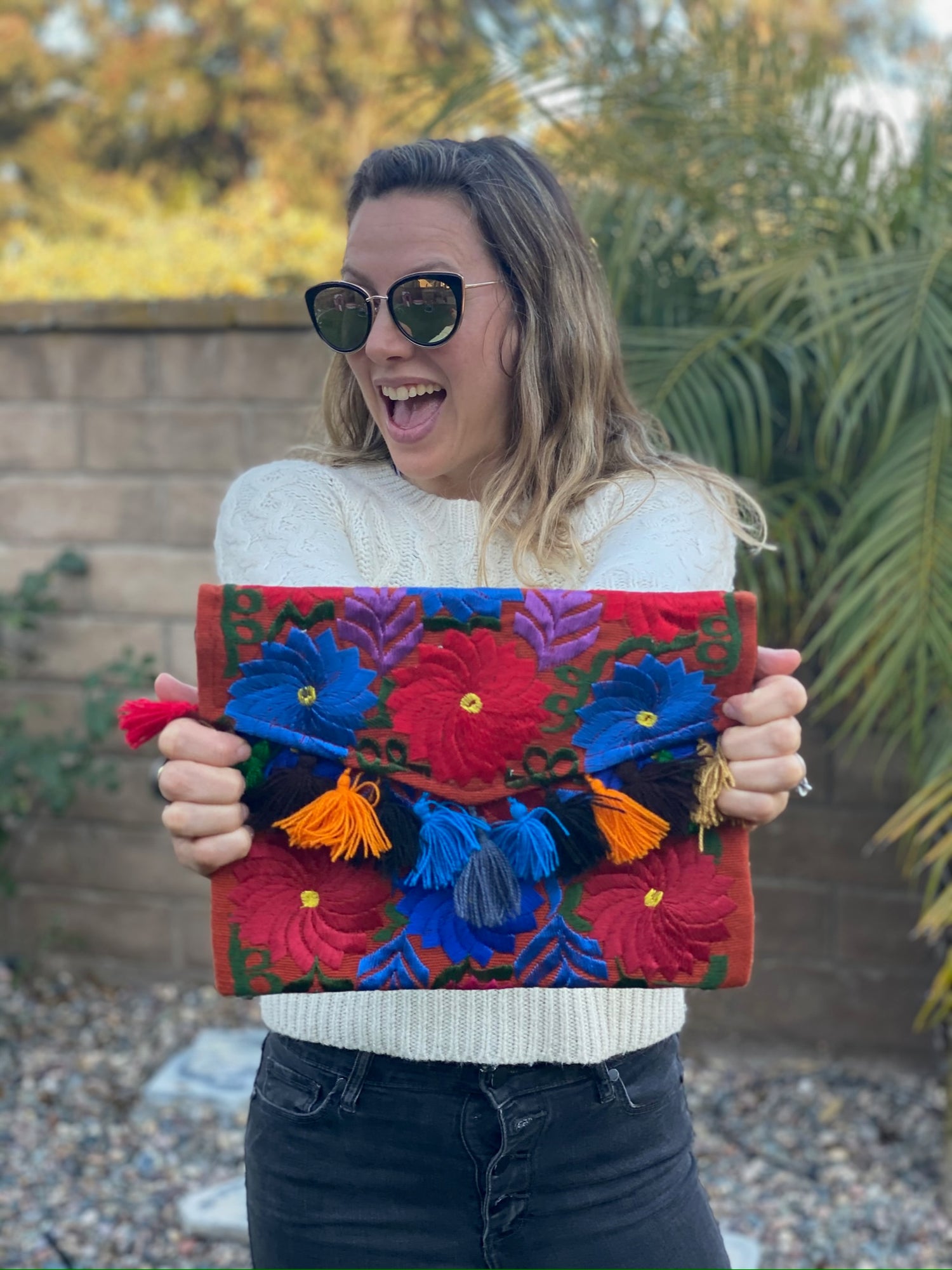In rural Mexico, the craftsmanship of the rebozo is not just an art form; it plays a crucial role in the local economy.
This traditional garment provides income and livelihoods to many artisans and their families, helping to sustain communities while keeping cultural heritage alive.
As you explore the significance of rebozo craftsmanship, you'll discover how these beautiful shawls reflect the rich history and traditions of the region.

Understanding the economic impact of rebozo production reveals its importance far beyond fashion.
Artisans in these areas utilize their skills to create unique, high-quality pieces that attract both local and international buyers.
This demand not only boosts their income but also preserves the techniques passed down through generations, ensuring that this cultural legacy is not lost.
As you learn more about the rebozo, you'll see how it intertwines identity, artistry, and economic growth. The story of this iconic garment is one of resilience, creativity, and community support that sustains the livelihoods of many and contributes to the richness of Mexican culture.
Key Takeaways
- The rebozo is vital for economic stability in rural Mexico.
- Artisans blend cultural heritage with modern market demands.
- Supporting rebozo craftsmanship fosters community and tradition.
Cultural and Historical Significance of the Rebozo

The rebozo is an important symbol in Mexican culture with a rich history and deep connections to identity and tradition. It represents the craftsmanship of indigenous women and reflects a blend of cultural influences through time.
The Rebozo in Mexican Identity and Tradition
You can see the rebozo as more than just a garment; it’s an essential part of Mexican identity. For many, it symbolizes cultural heritage and pride.
The rebozo is often worn on special occasions, reflecting local customs and ceremonies. In communities like Chiapas and Hueyapan, women use the rebozo to express their cultural roots.
It also connects to the traditional clothing, such as the huipil, worn by indigenous women.
Famous figures like Frida Kahlo incorporated the rebozo into their identity, making it a symbol of resilience and femininity. Each woven pattern tells a story, representing the wearer’s unique cultural background.
Rebozo Through the Ages: A Historical Perspective
The history of the rebozo dates back to pre-Hispanic times. Initially crafted by indigenous women, it was made from materials like cotton and agave fibers.
This history shows the importance of the rebozo in indigenous and mestizo cultures throughout Mesoamerica.
As time passed, the rebozo evolved, influenced by the Spanish colonial period and various regional styles. These changes reflect broader social and economic shifts.
The craft has been passed down through generations, maintaining a connection to traditions while adapting to modern needs.
Throughout history, the rebozo has played a role in important ceremonies and celebrations. These include weddings, religious festivals, and cultural events, showcasing its enduring significance in Mexican culture.
Artistic Expressions: The Rebozo in Art and Exhibitions
Artists and designers have celebrated the rebozo through various art forms.
Exhibitions showcase its beauty and cultural importance, often highlighting its role in contemporary design.
Notable designers like Zandra Rhodes have drawn inspiration from the rebozo's intricate patterns. Photographs by Nickolas Muray capture its elegance.
Also, private collections and institutions, such as the Fashion and Textile Museum, display this rich textile tradition.
Events often feature artistic interpretations of the rebozo, linking historical significance with modern artistry. These exhibitions encourage a deeper appreciation of the craftsmanship involved and its role in shaping Mexican cultural identity.
The Economics of Rebozo Craftsmanship

Rebozo craftsmanship plays a significant role in the economy of rural Mexico. This section explores how the weaving process influences local economic conditions, the merge of traditional techniques with contemporary styles, and the impact of rebozo on both local and global markets.
The Weaving Process and Its Impact on the Economy
The weaving process of rebozos is labor-intensive and requires skilled artisans. The backstrap loom, using materials like cotton, silk, and wool, is central to this craft.
Each piece reflects unique techniques, such as the ikat dyeing process, where patterns are dyed before weaving.
Communities, particularly in places like Santa María del Río and Tenancingo, depend heavily on this craft for income.
Weavers support local economies through their production efforts. By selling hand-woven rebozos, they contribute to their families and communities, helping to sustain livelihoods.
Contemporary Rebozo: Merging Tradition and Modernity
Modern designers like Carla Fernández and Ricardo Legorreta have incorporated traditional rebozo techniques into contemporary fashion. This blend creates unique clothing styles showcasing the craftsmanship's rich history.
Designers are showcasing rebozos in exhibitions, such as one in Amsterdam, which raises international awareness. This visibility helps expand markets and attract customers who appreciate both tradition and modern design.
The use of indigo dye and other local materials connects contemporary pieces to their roots. This connection can boost interest and demand across various demographics, driving economic growth in rural areas.
The Role of Rebozo in Local and Global Markets
Rebozos represent more than just cultural artifacts; they have significant economic importance.
Locally, they provide a means of income for weavers. As appreciation for artisan goods grows, so does the demand for rebozos in international markets.
These textiles find their way into fashion shows and boutiques, appealing to consumers eager for unique, handcrafted items. This trend highlights the skill and artistry involved in creating rebozos.
In addition, the rebozo market can enhance tourism, drawing visitors interested in authentic Mexican crafts. The economic benefits extend beyond individual weavers to entire communities, fostering development and preserving traditional methods.
Frequently Asked Questions

This section addresses some common inquiries about the economic significance of rebozo craftsmanship in rural Mexico. You will find insights into its cultural importance, unique features, and its impact on local economies.
What role does rebozo craftsmanship play in the economy of rural communities in Mexico?
Rebozo craftsmanship is a vital source of income for many families in rural areas. Artisans often rely on this skill to support their livelihoods and pass down traditions.
How has the rebozo been historically significant in Mexican culture?
Historically, the rebozo is more than a garment; it represents identity and heritage. It has been woven into the fabric of Mexican life for centuries, serving as a symbol of cultural continuity.
In what ways are rebozos used during pregnancy and childbirth?
Rebozos hold special significance during pregnancy and childbirth. Many women use them for support and comfort, helping to ease the physical strains of motherhood.
What are the unique features of a traditional Mexican rebozo compared to other textiles?
Traditional Mexican rebozos stand out due to their craftsmanship and materials. They are often made from cotton or silk and feature intricate designs, setting them apart from simpler textiles.
How does the production and sale of rebozos impact local economies?
The production and sale of rebozos create jobs and stimulate local economies. Artisans not only sell their products but also attract tourism, which provides additional income.
What cultural symbolism is associated with the rebozo in Mexican society?
In Mexican culture, the rebozo symbolizes warmth and connection. It is often associated with major life events, marking important transitions and celebrations.




